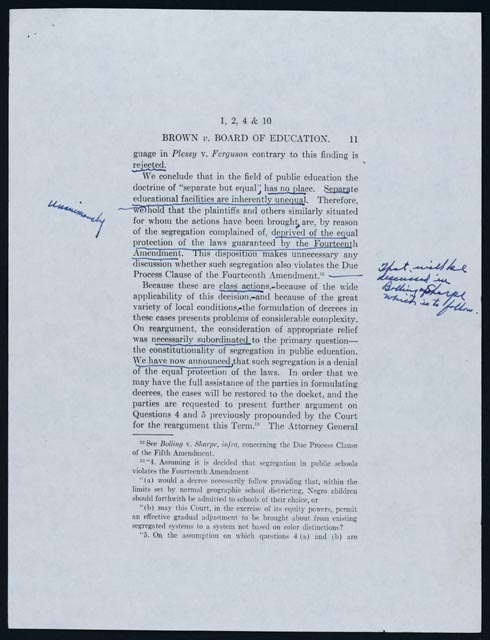Earl Warren’s reading copy of Brown opinion

Supreme Court Chief Justice Earl Warren’s reading copy of the unanimous Brown vs Board of Education of Topeka, Kansas decision, 1954, is annotated in his handwriting.
Excerpts
“We conclude that in the field of public education the doctrine of “separate but equal” has no place. Separate educational facilities are inherently unequal. Therefore, we hold that the plaintiffs and others similarly situated for whom the actions have been brought, are, by reason of the segregation complained of, deprived of the equal protection of the laws guaranteed by the Fourteenth Amendment.”
Questions:
What did the Supreme Court decide in the Brown vs. Board of Education decision?
According to the Supreme Court justices, what part of the constitution did school segregation violate?
How does Chief Justice Earl Warren’s handwriting on this document let you know what was important to him about this decision?